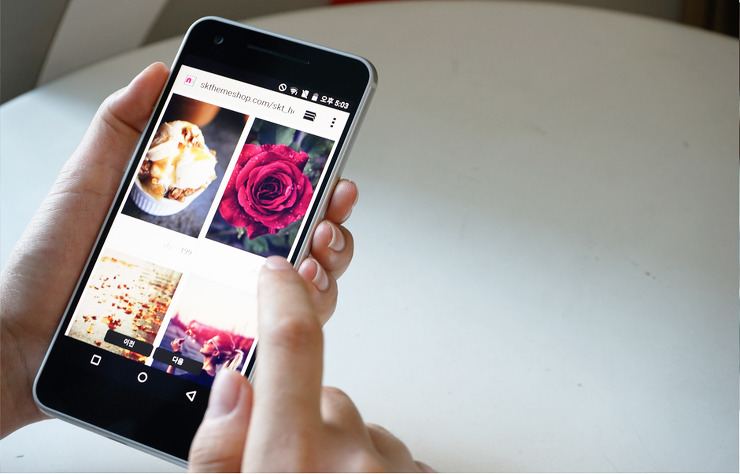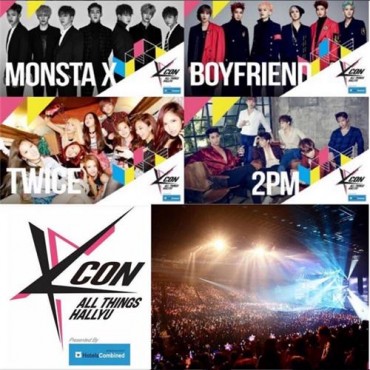
The LUNA smartphone, launched by lesser-known TG&Co. and manufactured by Foxconn, was sold out in around two weeks after its debut here earlier in September. Around 30,000 units were estimated to have been sold through SK Telecom. (image: SK Telecom)
SEOUL, Oct. 2 (Korea Bizwire) — Despite a never-ending influx of high-end handsets armed with such features as DSLR-like cameras and wireless charging, Yi Nari says she is satisfied with her Galaxy A5, a low-cost smartphone made by Samsung Electronics Co.
“The device has a fine selfie camera, so I chose the model over other pricey high-end ones,” said Yi, an 18-year-old student from Yongin, just south of Seoul. “The smartphone has all features I need for studying.”
The 5-inch Galaxy A5, released in January, costs only around half of the Galaxy S6, but comes with a 5-megapixel selfie camera, the same one installed in the latest flagship of Samsung, the world’s top smartphone maker.
Yi is among a rising number of budget smartphone users in South Korea and around the globe, who are attracted to budget models because of their reasonable prices as well as the fact that they are equipped with essential functions, but come without unnecessary features.
In line with the growing popularity of low-cost smartphones, Samsung and other handset makers have rolled out diverse products. Samsung manages three budget series under its wing, A, E and J, with the A lineup boasting the most improved features and a higher price.’
The 5-inch Galaxy A5, released in January, for example, is equipped with a metal frame and costs around 484,000 won (US$411). It boasts a 13-megapixel rear camera with a 2,300 mAh battery capacity, with other features also falling not so far behind the flagship models.
LG Electronics Inc. released the flip-style LG Wine Smart Jazz on Sept. 21, which came with a price tag of only 242,000 won.
The LUNA smartphone, launched by lesser-known TG&Co. and manufactured by Foxconn, was sold out in around two weeks after its debut here earlier in September. Around 30,000 units were estimated to have been sold through SK Telecom Co., the country’s No. 1 mobile carrier.
The 5.5-inch smartphone comes with a full HD display, 8-megapixel rear camera and 2,900mAh battery, but costs around 310,000 won including discounts, making it significantly cheaper than the 5.7-inch Galaxy Note 5 that held a factory price of around 899,000 won.
TG&Co. said it has decided to expand production of the model.
South Korea’s Ministry of Science, ICT, and Future Planning said rising sales of budget smartphones can be considered “positive,” as it helps households cut phone bills.
The portion of handsets priced under 500,000 won took up around 21.5 percent of the combined local sales in the January-September period of 2014, the ministry said. The figure soared to 34.8 percent in August.
The ministry’s promotion of mobile virtual network operators (MVNOs), or mobile service providers that rent networks from the country’s existing carriers, has also added to the rise of budget models.
As they save on network operation costs, MVNOs usually provide users with plans cheaper than those of the major carriers through their exclusive budget smartphone models.
Samsung and other handset makers, however, are not pleased with the growing popularity of budget smartphones and their increasing sales, which end up eating into their earnings.
With the local smartphone market being saturated, industry watchers said, the rising sales of budget smartphones do not mean the emergence of new demand, but rather existing users shifting to buy cheaper phones.
Samsung, whose budget models took up around 70 percent of its combined smartphone sales as of end-2014, is expected to continue to post lackluster earnings in its mobile business in the third quarter.
“Although sales of smartphones are likely to beat expectations, the rising portion of mid-to-low-end models will hurt Samsung’s profitability,” said Lee Ka-keun, an analyst at KB Investment & Securities Co. “Such budget models are replacing high-end ones faster than expected.”
Samsung saw its operating profit for the information technology and mobile business division, one of the company’s main revenue sources, fall 37.5 percent on-year to 2.76 trillion won in the second quarter. KB Investment expects the figure to reach 2.1 trillion won in the third quarter.
LG Electronics has also been facing hurdles. Its mobile communications business, including smartphones, posted 3.6 trillion won in revenues in the second quarter, nearly flat from a year earlier.
The segment’s operating profit nosedived 99.7 percent on-year to 200 million won, which implies it has literally made only a few cents for every smartphone sold.
“Although sales of smartphones by Samsung will rise 11.8 percent on-quarter to reach 80.5 million units in the third quarter, the growth will be led by budget models,” said Park Young-joo, an analyst at Hyundai Securities Co. “Thus, the average price of Samsung handsets will fall 14.8 percent.”
Despite such a concern, an LG Electronics official said there is no other choice but to face the music.
“We cannot improve our earnings even if our premium models succeed, should sales of budget products remain dull,” said Cho Jun-ho, who heads LG’s mobile business on Monday. “We plan to release more low-end devices with improved designs (to revitalize the profitability of the mobile device).”
Industry watchers said with the rise of budget lineups being inevitable, smartphone makers should seek ways to generate new opportunities by not only focusing on selling smartphones, but also promoting other related businesses.
According to data compiled by industry tracker Strategy Analytics, budget smartphones are predicted to account for around 55 percent of the global market this year, up from 20.4 percent posted in 2011.
Earlier in September, a high-ranking Samsung official hinted its latest mobile payment service, Samsung Pay, will expand to budget models as well, implying that the tech giant will “deal with” the rise of low-and-mid-end smartphones.
Samsung also started the sales of its first round-type smartwatch on Friday, while LG showcased the LG Watch Urbane 2nd Edition on the same day, the first Android Wear smartwatch that boasts a long-term evolution (LTE) network feature. Such move also reflects the tech giant’s efforts to find new sources of profits, they added.
(Yonhap)






